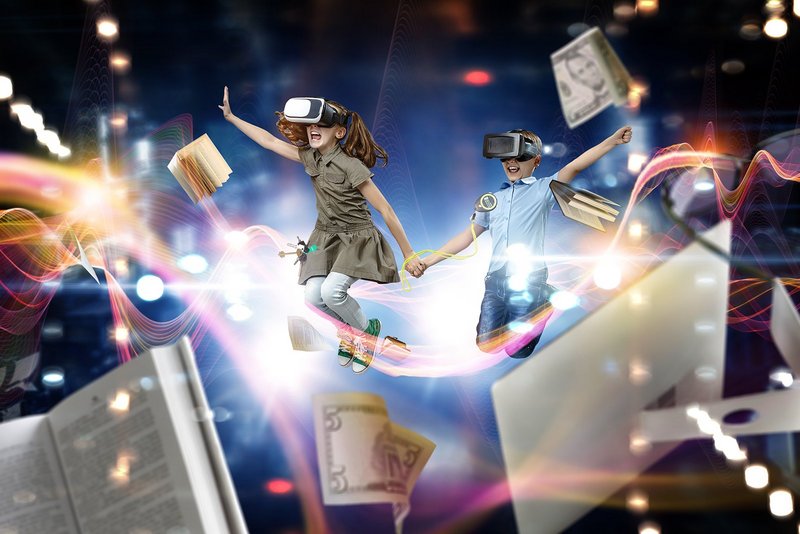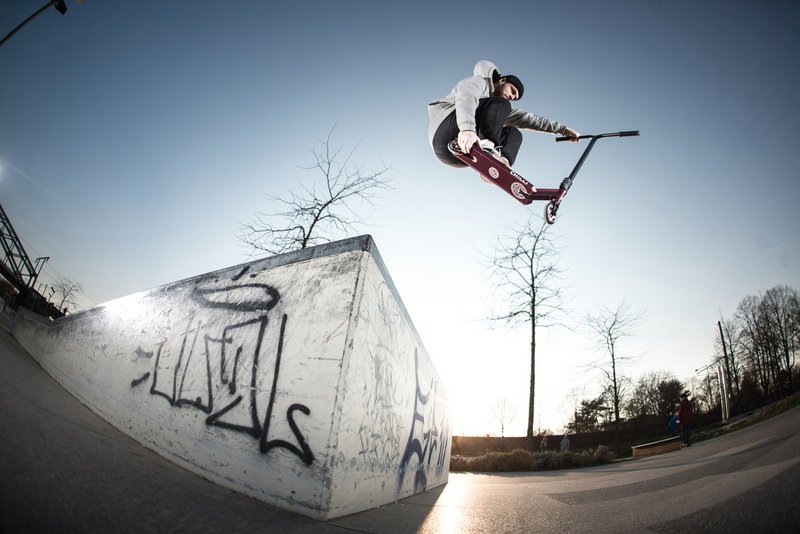
Flashback: bio!TOY conference in Nuremberg
A comment by Sharon Keilthy
At the bio!TOY conference, the industry met in Nuremberg to discuss how to make toys more sustainable. A comment by Sharon Keilthy, toy eco-activist from Ireland.

bio!TOY conference happens every 2 years. I spoke at the last one in 2021, which focused mainly on bioplastics. Afterwards I asked co-organiser Harald Kaeb: could we expand the scope to ‘sustainable toys’? We decided no - wooden / cardboard / pre-loved toys are all too different. But ‘sustainable plastic toys’, both bioplastic and recycled plastic, would work - toy manufacturers and material suppliers are mostly considering both.
So bio!TOY 2023 considered both too (and how to choose between them)!
I think all day, every day, about sustainable toys. So it felt like ‘finding my tribe’ to spend 2 days nerding-out on sustainable plastics with over 100 fellow enthusiasts!
Here’s who was there, the buzz-words and take-home themes, and the moments when you could hear a pin drop!
Who was there

117 people (and 6 puppets!):
78 in-person, 39 via Zoom
31 of whom spoke (see logos chart)
The buzz-words and take-home theme
Why: it’s personal
I was encouraged by speakers referring to a fossil-fuel-free future as, “it will be”. And every speaker showed determination to see toys become sustainable - often from very personal motivation: their children.
My daughter asked me, “Daddy why are you making toys from petroleum? Our planet is in crisis!” And I didn’t have a good answer. She was right. So I went into the office and told my team, “We need to change.
Steven van Bommel, founder of BiOBUDDi
I have two children who are Fridays for Future activists. This is personal. And a company like ours has a big carbon footprint. So we need to change.
Christian Ruthard, INEOS Styrolution
I wanted my children to grow up in a thriving world. So I had two choices: raise them without toys, or make toys sustainable.
Sonia Sánchez, Sustainable Toys Action Consulting
I went shopping for my daughter’s 4th birthday and I couldn’t buy the plastic-wrapped-in-plastic anymore. I came out of the toystore empty-handed. I decided, if not me now, then who when, to fix this? So I quit my job and started the world’s first eco toystore.
- Sharon Keilthy (me!), Jiminy Eco Toys and Sustainable Toys Action Consulting
Defining ‘sustainable toys’
And they are right: toys is the world’s most plastic-intensive industry, with 90% of them virgin petro-plastic, with a carbon footprint so big we’d have to plant 1 billion trees to absorb it!
Sustainability means reducing carbon emissions. Anything else is blah, blah
Filippo Gallizia, GeoMag World

The vast majority of presentations agreed with him, and focused on making toys carbon-neutral.
Yet toy recyclability appeared in many questions and even one toy maker’s sustainability strategy. But as many said, it’s a red herring - potentially even greenwashing.
For my eco toy store Jiminy, our strict standards focus on carbon footprint (a real, immediate benefit to the world), not on recyclability in today’s recycling systems (a theoretical benefit customers won’t realise). That’s because a quality toy will be played with for 25 years before it’s too worn or broken for the next child. And in 25 years (nearly 2050), recycling technology will be completely different (better).
In fact, selling a benefit that won’t be realised is greenwashing, say the FTC Green Guides, (the EU equivalent of which is due for approval this year).
And the waste hierarchy tells us, it’s usually better to recycle, than biodegrade. It takes far less electricity / water / chemicals to recycle existing paper into a new sheet, than to biodegrade it, grow a new tree, and make paper.
So although our society currently associates “biodegradable” with “sustainable”, actually we’d only want a toy to be biodegradable if it frequently ends-up in nature - like Nerf darts!
Bio-based vs recycled
“There's an ecological limit to the quantities of bio-based plastics, so recycled plastics will be key.” - Alexander Kronimus, Plastics Europe. The importance of recycled plastic was a strong theme at bio!TOY.
But any recycling risks contamination. Industrial waste is safer - we know better what’s in it. But post-consumer waste is riskier (imagine a mobile phone full of heavy metals being mixed-in). Separating toy-safe plastics (by resin and colour) from post-consumer waste is expensive - meaning they are not widely available in quantities - nor at prices - needed, especially by bigger toy manufacturers.
The main source of toy-safe recycled plastics is food containers, especially PET drinks bottles - but there is controversy about breaking the bottle-to-bottle closed recycling loop to divert material into toys.
Bio-plastic, being (renewable) virgin material, is more readily toy-suitable - but will be a small % of the “fossil-free end-state” for plastics, whoever you listen to!
The bio!TOY policy debate with Toy Industries of Europe, Plastics Europe, the European Commission, and Hasbro, considered how policy could make toy-suitable recycled plastic more available, by encouraging growth of supply.
Mass balance

Mass balance means putting a mixture of plants (biomass), and/or waste (trash), into the same processing equipment together with fossil feedstock - tracking the % of each going in - and allocating that same % to the outputs.
For example, if 40% biomass feedstock goes in, 40% by weight (mass) of toys made from the resulting plastic can be certified bio-based - either: 40% of the toys can be certified 100% bio-based, and the other 60% as 0% bio-based; or all of the toys can be certified as 40% bio-based.
But we don’t know what % of that toy in your hand was originally biomass (not without expensive Carbon-14 tests on every batch of plastic)!
Floris Buijzen of Borealis used a helpful analogy: renewable electricity flows through the same electricity distribution grid as fossil electricity - we just attribute the renewable to the customers who buy it.
Personally I’m fine with mass balance. Encouraging any material producer to use more plants / waste, less petroleum, significantly helps our climate. But some toy makers fear consumers won’t understand, and would rather know the toy in their hand was originally 100% plants / waste.
Change is hard (and big change is harder)
Every toy maker related failures and learnings - with particular challenges for the biggest toy makers, e.g.:
Sooner or later consumer demand will move to sustainability. So in 2017 we decided to switch to recycled plastics - starting with our main line (not a minor one).
Filippo Gallizia, GeoMag World, mid-size player which already switched its entire range to recycled polyolefins.
We have a broad portfolio of over 4,000 items, half of which are renewed each year, which makes sustainability tricky. But nonetheless we will reduce our carbon emissions by 42% by 2030 and achieve Net Zero by 2050.”
Rafaela Hartenstein, Hasbro
Safety
It felt like half the speakers said something like, “we want to be sustainable but we can’t compromise child safety.” The main concern being recycled plastics contamination (see above).
But I think Sonia Sánchez made the entire room stop breathing with this powerful counterpoint: "We talk about toy safety, and toy sustainability, as if they are trade-offs. But sustainability is safety, just in the long-term. In fact if you are a child already suffering floods or drought due to climate change, sustainability is safety now."
Cost
Some toy makers reported no increase in cost switching to recycled materials, e.g., GeoMag who attributed this to having chosen a widely-available recycled polymer.
But most reported higher costs, e.g., Fischertechnik with 40% higher final costs switching one playset to bio-PA6.
Ulrich Betzold reported that after extensive e-commerce testing, they learned customers will pay up to 10% more (full retail price) for sustainability. By my calculations, if materials are only 10% of a toy maker’s costs, they can pass-on up to 2x higher material costs before retail price increases by 10%.
Overall take-home
I left bio!TOY feeling very encouraged, that so many people with so much influence on our industry are so committed to sustainability…but also conscious that as an industry that exists for children, we should be leading among other industries on sustainability, and we have much work to do to get from here to there.
About the author
Sharon Keilthy from Dublin, Ireland founded the world's first eco-activist toy store Jiminy.ie and has sold over €2 million of eco toys to date - all carbon-neutral and minimal-waste. She co-founded the Women in Toys Sustainability Learning Community, sits on the Toy Association Sustainability Committee, and is faculty at the Toy Design Degree Otis College Los Angeles.
Some very fresh, forward-looking concepts were introduced at bio!TOY 2023! Here are my favourites:
- Senior Industrial Designer Elise Hounslow: biomimicry, which means asking, how does nature solve a similar problem, and how can we apply that?
- Floris Buijzen, Borealis: Could materials suppliers in future have a “polymer as a service" offering?
- Mesbah Sabur, Circularise: blockchain-enabled digital product passports, automated tracking / exchange of supply chain certifications such as ISCC.
- Matthew Regnier, Dagoma Toy Rescue: a networked approach to 3D printing of spare parts for local repair of popular toys.
- Sharon Keilthy (me!), Jiminy Eco Toys and Sustainable Toys Action Consulting: “The case for toy reuse is, we could stop making toys now and children in the developed world would have enough toys for at least 15 years.”




